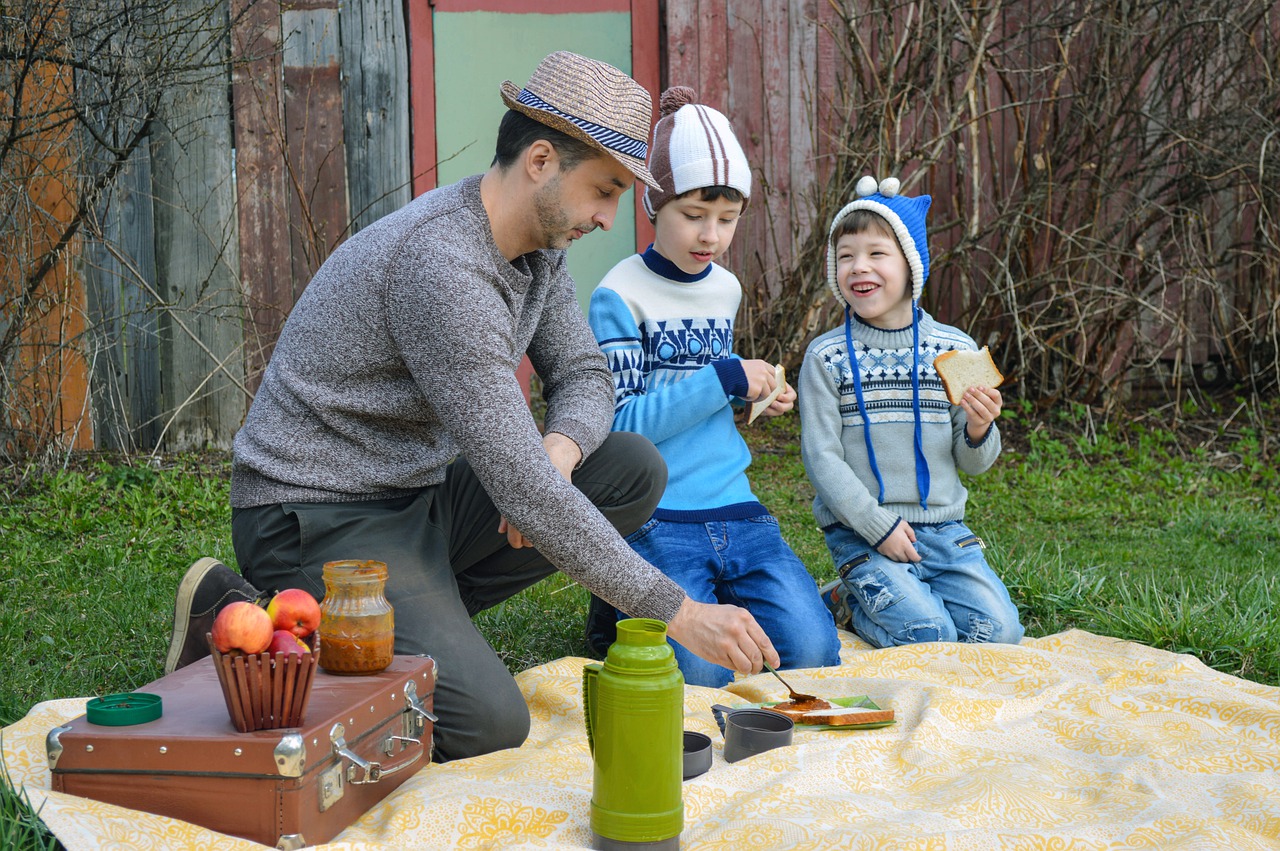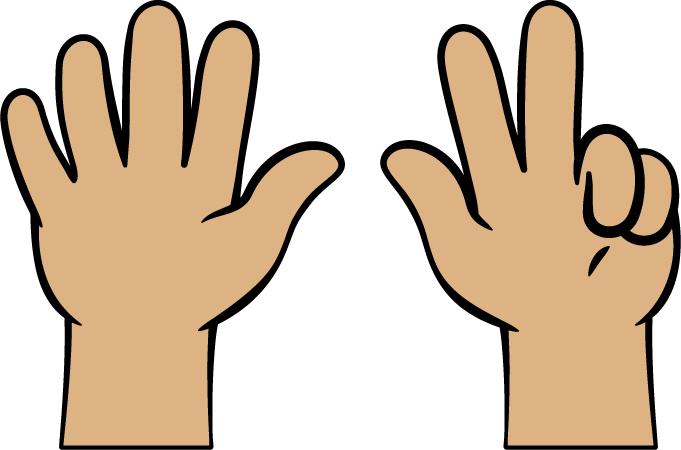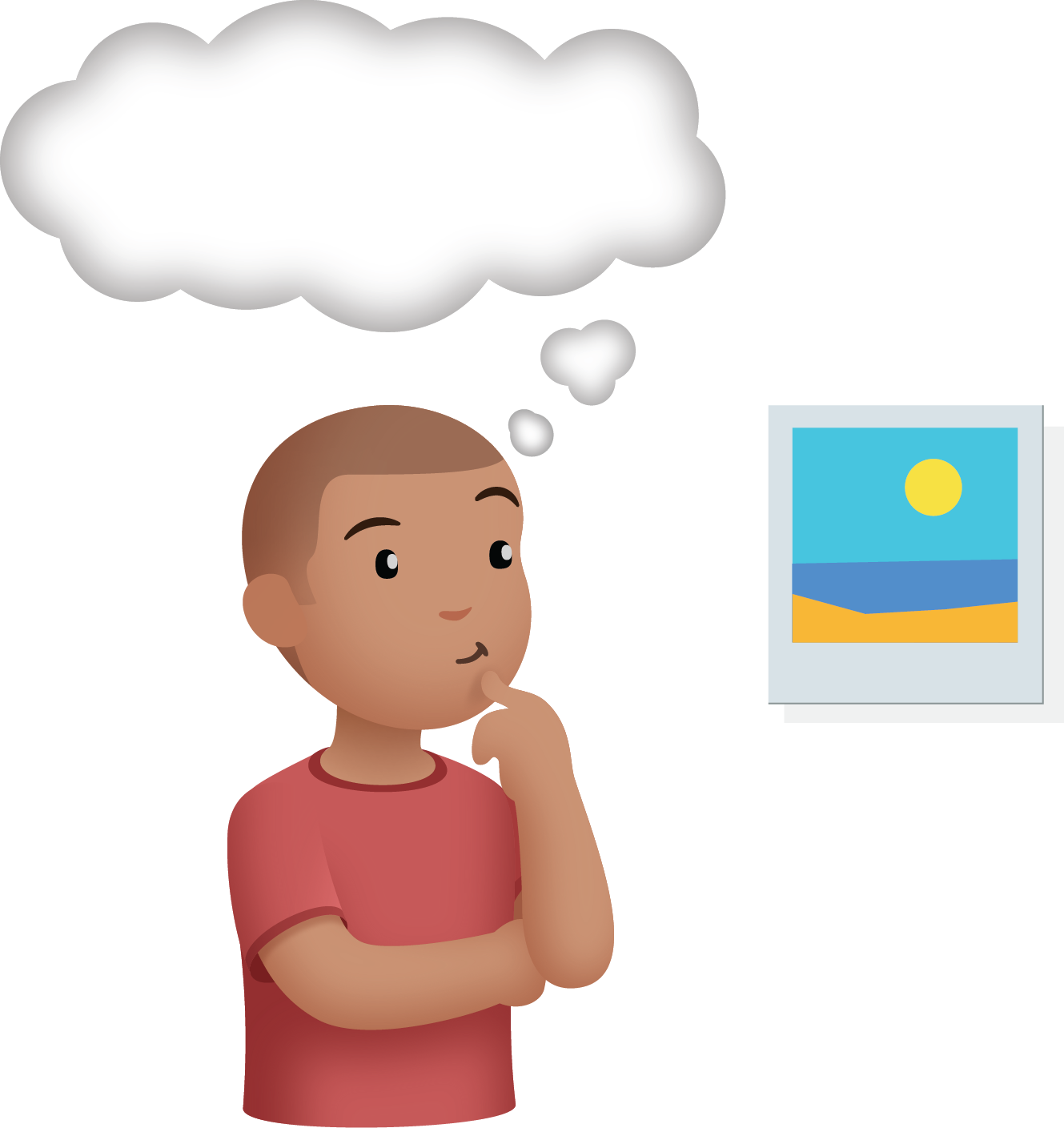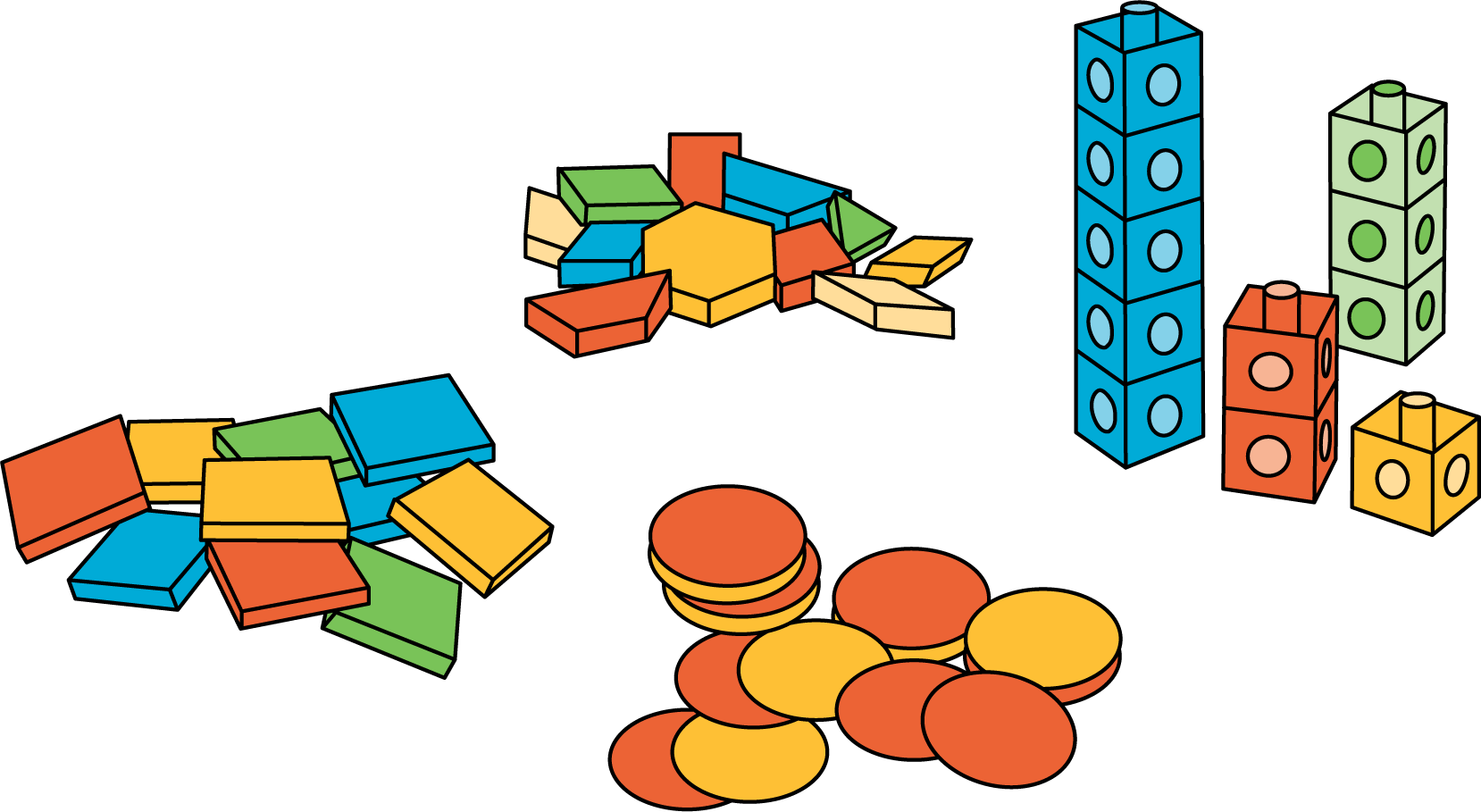Lesson 10
Compare Drawings
Warm-up: Questions About Us: Pets? (10 minutes)
Narrative
Advances: Speaking, Representing.
Required Materials
Materials to Copy
- Questions About Us Chart 5-Frame Template
Required Preparation
- Cut out enough 5-frames to make a chart with a space for each student to answer the survey question.
Launch
- Groups of 2
- Display Questions About Us chart.
- “Which pet is your favorite: dogs, cats, or rabbits?”
- 30 seconds: quiet think time
- Record each student’s choice with a circle in a 5-frame.
Activity
- “How can we figure out how many students chose dogs?”
- 30 seconds: quiet think time
- 30 seconds: partner discussion
- Share responses.
- Demonstrate or invite students to demonstrate counting.
- “How many students chose dogs?”
- “How many students chose cats?”
- 30 seconds: quiet think time
- Share responses.
- “How many students chose rabbits?”
- 30 seconds: quiet think time
- Share responses.
Student Response
For access, consult one of our IM Certified Partners.
Activity Synthesis
- “What was different about the question that we answered today?” (There were 3 choices instead of 2.)
Activity 1: Apple Slices for a Picnic (10 minutes)
Narrative
The purpose of this activity is for students to solve Add To, Result Unknown story problems. In the synthesis, students determine which drawing shows what happens in the story problem (MP2).
Required Materials
Materials to Gather
Launch
- Groups of 2
- Give students access to connecting cubes or two-color counters.
- Display image.
- “What do you notice? What do you wonder?” (There are 3 people. They are having a picnic. There are sandwiches.)
- 30 seconds: quiet think time
- Share responses.
- “Have you ever had a picnic in the park? What kinds of things did you bring to the picnic?”
- Read and display the task statement.
- “Tell your partner what happened in the story.”
- 30 seconds: quiet think time
- 1 minute: partner discussion
- Monitor for students who accurately retell the story. Choose at least one student to share with the class.
- Reread the task statement.
- “Show your thinking using drawings, numbers, words, or objects.”
Activity
- 2 minutes: independent work time
- 2 minutes: partner discussion
Student Facing

There were 3 apple slices at the picnic.
Tyler's dad brought 5 more apple slices to the picnic.
How many apples slices are there now?

Student Response
For access, consult one of our IM Certified Partners.
Advancing Student Thinking
If students take out more or fewer than 8 counters or other math tools, consider asking:
- “Can you use your counters to tell me what happened in the story?”
- “There were 3 apple slices at the picnic. Which counters show the 3 apple slices that were at the picnic? Which counters show the 5 more apple slices that Tyler’s dad brought to the picnic?”
Activity Synthesis
- Draw and display 5 apple slices.

- Draw and display 3 circles and 5 circles.
- “Which drawing shows what happens in the story? How do you know?” (The circles show what happened in the story. First there were 3 apples slices and then Tyler's dad brought 5 more apple slices.)
- “There were 3 apple slices at the picnic. Then Tyler's dad brought 5 more apple slices to the picnics. 3 apple slices and 5 apple slices is 8 apple slices. We can write that as ‘3 and 5’ or ‘\(3 + 5\)’.”
Activity 2: Compare Drawings (10 minutes)
Narrative
The purpose of this activity is for students to compare two drawings that represent the story problem in the previous activity. Students notice that it can be easier to see how an organized representation connects to the story problem (MP6).
Supports accessibility for: Organization, Visual-Spatial Processing
Launch
- Groups of 2
- “Andre and Noah both drew pictures to show what happened in the story problem.”
- If needed, reread the story problem from the previous activity:
- “There were 3 apple slices at the picnic. Tyler's dad brought 5 more apple slices to the picnic. How many apples slices are there now?”
Activity
- Display Andre’s representation.
- “How does Andre’s drawing show what happened in the story?”
- 30 seconds: quiet think time
- 1 minute: partner discussion
- Share responses.
- Display Noah’s representation.
- “How does Noah’s drawing show what happened in the story?”
- 30 seconds: quiet think time
- 1 minute: partner discussion
- Share responses.
- If needed, ask “Why do you think Noah drew a line in the middle of his circles?”
Student Facing


Student Response
For access, consult one of our IM Certified Partners.
Activity Synthesis
- Display both representations.
- “What is the same about Andre and Noah’s drawings?” (They both show 8 circles. They both show 3 apple slices and 5 more apple slices.)
- “What is different about Andre and Noah’s drawings?” (Andre’s circles are messy. Noah’s are in a line. It’s easier to see the 3 apple slices and the 5 apple slices in Noah’s drawing. Noah’s drawing is easier to count.)
Activity 3: Introduce Bingo, Add and Cover (25 minutes)
Narrative
The purpose of this activity is to introduce students to stage 3 of the Bingo center. Students roll 2 cubes onto a dot mat and count to determine the total number of dots. Students place a counter on any squares that show the same total.
After they participate in the center, students choose from any stage of previously introduced centers.
- Math Fingers
- Math Stories
- Subtraction Towers
- 5-frames
- Counting Collections
Required Materials
Materials to Gather
Materials to Copy
- Bingo Stages 1-3 Gameboard
- Dot Mat 1-5 (dots and 5-frames)
Required Preparation
- Each group of 4 students needs 2 connecting cubes.
- Gather materials from:
- Math Fingers, Stages 1-3
- Math Stories, Stages 1 and 2
- Subtraction Towers, Stage 1
- 5-frames, Stages 1 and 2
- Counting Collections, Stage 1
Launch
- Groups of 4
- Give each group of students 2 connecting cubes, two-color counters, and a dot mat. Give each student a gameboard.
- “We are going to learn a new way to do the Bingo center. It is called Bingo, Add and Cover.”
- Display a dot mat 1-5.
- “I’m going to roll 2 cubes onto the mat. Then I need to figure out how many dots I have altogether.”
- Demonstrate rolling 2 cubes onto the mat.
- “How can I figure out how many dots I have altogether?” (You can count all of the dots. You can just see that there are 2 and 2, which is 4.)
- Display gameboard.
- “I have 4 dots altogether. Now I need to cover all of the squares on my gameboard that also have 4 things. Which squares should I cover?”
- “Take turns rolling the cubes onto the mat, then each person covers the squares on their mat. The game ends when someone has 4 counters in a row.”
Activity
- 8 minutes: partner work time
- “Now you can choose another center. You can also continue playing Bingo.”
- Display the center choices in the student book.
- Invite students to work at the center of their choice.
- 10 minutes: center work time
- If time, invite students to choose another center.
Student Facing
Choose a center.
Bingo

Math Fingers

Subtraction Towers

5-frames

Math Stories

Counting Collections

Activity Synthesis
- “What materials do you need to play Bingo? Where can you find the materials? When you are finished playing, where do you put the materials?”
Lesson Synthesis
Lesson Synthesis
Andre


“Which drawing makes it easier to see what happened in the story? Why?”
If needed, ask “Which drawing makes it easier to see which apple slices were at the picnic first and which apple slices Tyler's dad brought to the picnic?”
“When we organize our drawings, it can make it easier to see what happened in the story.”
Cool-down: Unit 4, Section B Checkpoint (0 minutes)
Cool-Down
For access, consult one of our IM Certified Partners.
